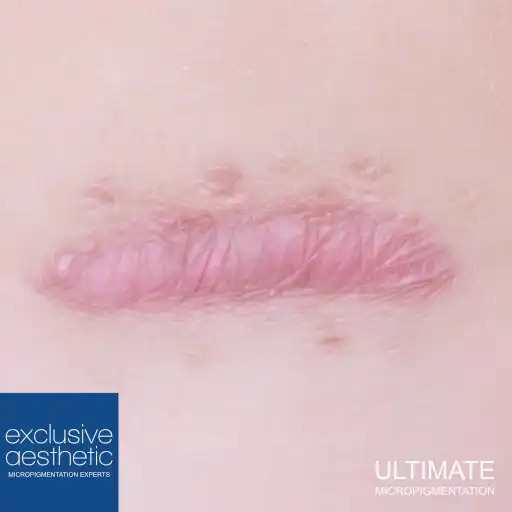What Is Keloid Scarring And Can It Be Treated With Micropigmentation?
What Is Keloid Scarring And Can It Be Treated With Micropigmentation?
Outline
Introduction to Keloid Scarring
- Explanation of keloid scarring
- Common causes of keloid scarring
Understanding Micropigmentation
- Definition and purpose of micropigmentation
- How micropigmentation works
Treatment Options for Keloid Scarring
- Traditional treatment methods
- Challenges associated with traditional treatments
Micropigmentation as an Alternative Treatment
- Introduction to micropigmentation as a potential solution
- Benefits of micropigmentation for keloid scarring
How Micropigmentation Works for Keloid Scarring
- Detailed process of micropigmentation for keloid treatment
- Expected results and outcomes
Safety and Risks of Micropigmentation
- Discussion on the safety aspects of micropigmentation
- Potential risks and side effects
Suitability and Candidacy for Micropigmentation
- Factors influencing candidacy for micropigmentation
- Consultation process and considerations
Cost Considerations
- Cost comparison between micropigmentation and traditional treatments
- Factors affecting the cost of micropigmentation
Real-life Experiences and Testimonials
- Sharing stories of individuals who have undergone micropigmentation for keloid scarring
Research and Studies
- Overview of relevant research and studies supporting micropigmentation for keloid treatment
- Latest advancements and findings in the field
Combination Treatments
- Discussion on combining micropigmentation with other therapies for enhanced results
- Examples of complementary treatments
Aftercare and Recovery
- Tips for post-micropigmentation care
- Expected recovery timeline
Frequently Asked Questions
- Addressing common queries about micropigmentation for keloid scarring
Conclusion
- Recap of the benefits of micropigmentation for keloid scarring
- Encouragement for individuals considering this treatment option

What Is Keloid Scarring And Can It Be Treated With Micropigmentation?
Keloid scarring is a type of raised scar that occurs when the body overreacts to an injury, such as a cut or burn. Unlike normal scars, keloids extend beyond the original wound area and can be itchy, painful, and aesthetically displeasing. They often develop in areas with high tension, such as the chest, shoulders, and earlobes.
Understanding Micropigmentation
Micropigmentation, also known as cosmetic tattooing or permanent makeup, is a non-invasive procedure that deposits pigments into the dermal layer of the skin. It is commonly used to enhance facial features, camouflage imperfections, and restore lost pigment, such as in cases of alopecia or vitiligo.
Treatment Options for Keloid Scarring
Traditional treatment options for keloid scarring include corticosteroid injections, surgical excision, cryotherapy, and laser therapy. While these methods may provide temporary relief, they often come with drawbacks such as pain, scarring, and risk of recurrence.
Micropigmentation as an Alternative Treatment
Micropigmentation has emerged as a promising alternative for treating keloid scarring. Unlike traditional methods, micropigmentation works by blending the colour of the scar with the surrounding skin, creating a more uniform appearance.
How Micropigmentation Works for Keloid Scarring
During a micropigmentation session, a specialised device deposits pigment into the scar tissue, gradually reducing its visibility. Multiple sessions, spaced several weeks apart, are required to achieve the desired results.
Safety and Risks of Micropigmentation
Micropigmentation is generally considered safe when performed by a trained and experienced practitioner. However, like any cosmetic procedure, there are potential risks, such as infection, allergic reactions, and dissatisfaction with the outcome.
Suitability and Candidacy for Micropigmentation
The suitability for micropigmentation depends on various factors such as the size, location, and severity of the keloid scar, the individual’s skin type and medical history. A consultation with a qualified micropigmentation specialist is essential to determine candidacy.
Cost Considerations
The cost of micropigmentation for keloid scarring varies depending on factors such as the size and number of scars, the expertise of the practitioner, and the geographic location. While it may be more expensive than some traditional treatments upfront, micropigmentation offers long-term benefits and is more cost-effective in the long run.
Real-life Experiences and Testimonials
Many individuals who have undergone micropigmentation for keloid scarring report high satisfaction with the results. They often describe feeling more confident and comfortable in their own skin, and their scars appear noticeably improved.
Research and Studies
Recent studies have shown promising results regarding the effectiveness of micropigmentation for keloid treatment. Research suggests micropigmentation can help soften and flatten keloid scars, improving texture and colour matching with the surrounding skin.
Combination Treatments
In some cases, combining micropigmentation with other therapies, such as laser treatment or silicone gel sheets, may yield better outcomes. These combination approaches address multiple aspects of keloid scarring, including texture, colour, and scar tissue buildup.
Aftercare and Recovery
Following micropigmentation treatment, the correct aftercare is essential to ensure optimal healing and results. We advise patients to avoid sun exposure, avoid picking or scratching the treated area, and follow any additional instructions their practitioner provides.
Conclusion – What Is Keloid Scarring And Can It Be Treated With Micropigmentation?
What Is Keloid Scarring And Can It Be Treated With Micropigmentation? – In conclusion, micropigmentation offers a promising solution for individuals seeking effective and minimally invasive treatment for keloid scarring. With its ability to blend scars seamlessly with the surrounding skin, micropigmentation can significantly improve the appearance and texture of keloid scars, restoring confidence and enhancing the quality of life.
Frequently Asked Questions
Is micropigmentation painful?
Micropigmentation is generally well-tolerated and causes minimal discomfort. However, topical anaesthetics numb the treated area and enhance comfort during the procedure.
How long does micropigmentation last for keloid scars?
The longevity of micropigmentation results can vary depending on skin type, sun exposure, and the individual’s natural healing process. With proper care and maintenance, results can last several years.
Are there any side effects of micropigmentation?
While rare, potential side effects of micropigmentation may include temporary swelling, redness, or bruising at the treatment site. These usually subside within a few days following the procedure.
Does micropigmentation Work on all skin types?
Micropigmentation suits most skin types, but individuals with certain skin conditions or medical concerns may not be ideal candidates. A thorough consultation with a qualified practitioner is necessary to assess suitability.
How many sessions for optimal results?
The number of micropigmentation sessions needed varies depending on factors such as the size and severity of the keloid scar and the individual’s response to treatment. On average, we recommend 2 to 4 sessions for significant improvement.
Micropigmentation training by the industry expert with 35+ years’ experience.
What Is Keloid Scarring And Can It Be Treated With Micropigmentation?
Links To Our UK Services
- Homepage
- SPMU Training
- Foundation SPMU Training
- Tattoo Removals Training
- Eyebrow Tattoo Training
- Lip Blush Training
- Medical Micropigmentation Training
- Scalp Micropigmentation Training
- Areola Tattoo Training
- Scar Removal Training
- Skin Rejuvenation Training
- All Training Courses
What Is Keloid Scarring And Can It Be Treated With Micropigmentation?
GET IN TOUCH
If you would like to enquire about one of our training courses or treatments, message us using the floating widget (bottom right of the page), and we will contact you to discuss the next step.
Prefer to discuss using WhatsApp? Please get in touch with Candice using the number below.
What Is Keloid Scarring And Can It Be Treated With Micropigmentation?
We support the NHS.

